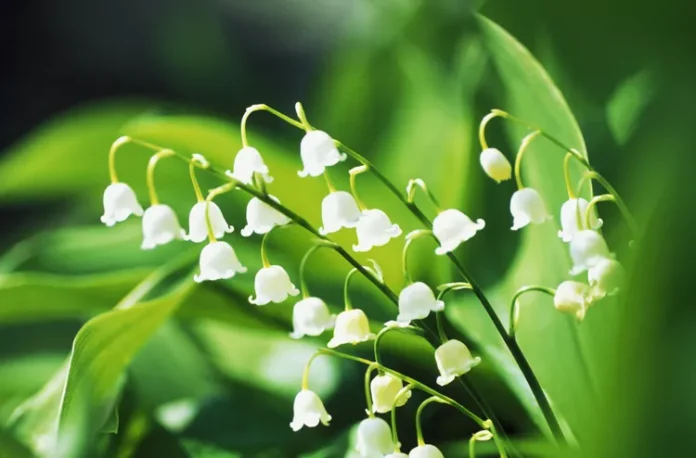The May lily of the valley is a herbaceous flowering plant that thrives in temperate climates. Interestingly, it consists of three subspecies, which some botanists classify as distinct species.
Description
Lily of the valley is a herbaceous plant, growing no more than 30 cm in height. Its rhizome is underground and runs horizontally, with basal leaves half-hidden in the soil. The flower-bearing stem carries an inflorescence of 10-20 flowers, usually facing one direction. Blooming occurs in late May and early June. The fruit is a red berry containing 1-2 seeds, appearing in early July. The plant reproduces vegetatively through its rhizome.
When are lilies of the valley harvested?
They are collected early in bloom before the flowers fully open. Uprooting is discouraged to prevent damage to the rhizome.
Varieties
Three subspecies are described:
- Lily of the Valley Keiske grows in the Far East, Japan, and China, resembling the Russian variety but with larger flowers.
- Mountain Lily of the Valley is native to Southeast USA, featuring larger leaves.
- Caucasian Lily of the Valley, native to the Caucasus, has larger flowers and longer petals, and is considered rare.
Medicinal Properties
Lily of the valley is widely used in folk medicine. Its compounds stimulate heart contractions, improve blood circulation, and promote diuresis. Extracts can be used as a mild sedative, to reduce epileptic seizures, lower fever, treat eye inflammation, relieve edema, and for headaches or menopause symptoms.
Is it poisonous?
Yes, lily of the valley is toxic. All parts contain toxic compounds, with the highest concentration in berries. Eating them can lead to severe poisoning, and overdose symptoms include nausea, vomiting, severe abdominal pain, weakness, hallucinations, and potential fatal heart irregularities.
Interesting Facts
- Lily of the valley oil is used by top perfume brands.
- Prolonged inhalation of its fragrance can cause headaches, and it’s not recommended to sleep in a room with its bouquet.
- In ancient Egypt, lilies of the valley were cultivated year-round.
- In France, May 1st is celebrated as Lily of the Valley Day, symbolizing purity and believed to have magical powers.
- The plant is one of Finland’s national symbols, once featured on coins before the euro’s adoption.
- Doctors once used its extract as an antidote to poison gas.
- It began being cultivated in Europe in the 16th century, with varieties having pink or red flowers.
- Lily of the valley is dangerous to pets, especially cats. It’s recommended to place bouquets out of animals’ reach.
- The Netherlands has a tradition of planting lilies of the valley after weddings.
Unfortunately, the population of lily of the valley is shrinking rapidly, especially near cities, due to careless uprooting, making it a protected species listed in the national Red Book.
